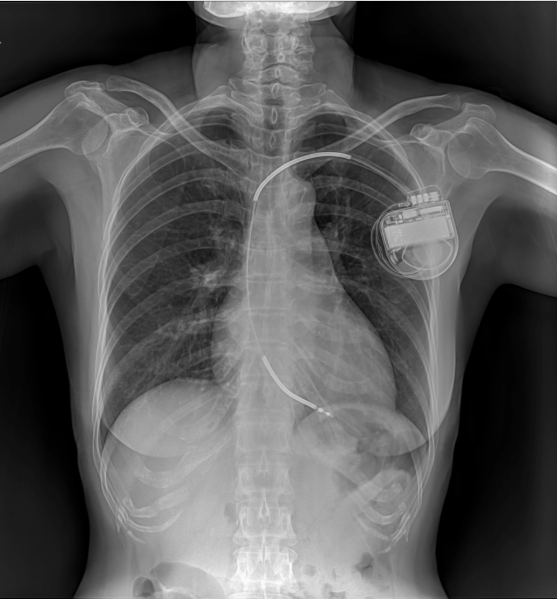10 Swedish brands and innovations
Spanners, streamed music and seatbelts – which of these 10 Swedish everyday items gets your vote?
1. Adjustable spanner
Some Swedish brands and innovations are known around the world without most people knowing that they're Swedish. A really old Swedish innovation and a staple in many toolboxes, the adjustable spanner or wrench, also popularly called ‘monkey wrench‘ or ‘English key’ (!), often comes in very handy during do-it-yourself (DIY) projects.
While one of the first iterations of this spanner was patented by British Joseph Stubs in 1840, today’s adjustable spanner, the ‘Swedish Key’, is attributed to Johan Petter Johansson. He was a Swedish inventor who improved upon Stubs' original concept and patented it in 1891.
2. Electrolux household appliances
While people probably recognise the name Electrolux on their kitchen appliances, many may not know that this company is Swedish – or that it is one of the best selling household appliance manufacturers in the world.
Started in 1919, the company originally sold Lux hoovers, or vacuum cleaners, and later added refrigerators, washing machines, dishwashers and a variety of other appliances to its product line. Today, the Electrolux Group – which includes AEG, Frigidaire and many other brands – sells its household products in around 120 countries every year.
3. Essity – from baby care to toilet paper
Essity is about the bare necessities of life. It is one of the world’s leading health and hygiene companies, with well-known brands such as Libero, Libresse and Cushelle toilet paper, to name a few.
The company's previous product developer Solgun Drevik is one of the world's leading innovators within feminine care, or femtech, with over 70 European and globally filed patents.
Once part of forest company SCA, founded in 1929, Essity broke off in 2017 to become an independent company, which is now present in around 150 countries.
4. H&M fashion
Bringing Sweden’s quintessential minimalist yet chic style of fashion to the world is H&M, more known as H&M. Started in 1947 as a women’s clothing store called Hennes (which means 'hers' in Swedish) in Västerås, founder Erling Persson later bought hunting and fishing equipment store Mauritz Widforss – and that’s how Hennes & Mauritz, later H&M, was born. Men’s and children’s clothing were added in 1968.
H&M now has more than 3,800 shops around the world. Other brands that are part of the H&M family are ARKET, COS, H&M HOME, Monki, & Other Stories, Sellpy and Weekday.
5. IKEA furniture
Home furnishing giant IKEA, founded in 1943 by Ingvar Kamprad, has grown to about 481 stores in more than 60 countries. Known for stylish do-it-yourself (DIY) home décor and furniture, IKEA continues to bring out the handy craftsman in people and is a must for many college students on low budgets.
By introducing its basic ‘flatpack’ concept in the 1950s, IKEA has been able to provide affordable Scandinavia-inspired furniture with bestsellers such as ‘Klippan’, ‘Poäng’ and ‘Billy’.
6. Spotify music streaming
When Daniel Ek and Martin Lorentzon launched Swedish company Spotify in 2008, they bridged a gap by providing legal online music streaming services as an alternative to pirated music file-sharing sites.
Spotify offers users not only millions of music tracks, but also podcasts and audibooks. The company estimates that it has 675 million users around the world, of which 263 million are paying subscribers.
7. Three-point seatbelt
Now a standard requirement in every passenger vehicle saving around one life every six minutes, the three-point seatbelt was developed by Swedish inventor and safety engineer Nils Bohlin in 1959 for Volvo. It’s designed with a Y shape to spread out energy across a moving body during an accident.
9. Volvo
Among the more famous Swedish brands and innovations, we find Volvo – as iconic as Swedish meatballs. Known around the world for its estate cars (that's station wagons to Americans) that have made the brand a beloved family cliché, Volvo is also synonymous with a wide range of other products.
In 2018, Chinese automotive manufacturing company Geely Holding Group bought a large share of Volvo Group – the part of the brand that mainly makes lorries, buses and construction equipment – and has owned Volvo Cars since 2010. Volvo is still headquartered in the Swedish city of Gothenburg, though.
First founded in 1927, Volvo Group has more than 100,000 employees with production facilities in 18 countries worldwide. Add to that the around 40,000 employees of Volvo Cars.
8. Walking frame
There are many personal stories behind Swedish brands and innovations. Swedish social scientist Aina Wifalk contracted polio – a virus that can cause temporary or permanent paralysis – at the age of 21. After tearing her shoulders from using walking sticks for two decades, she came up with the walking frame, or walker, an invention that has made life easier for elderly and disabled people since the late 1970s.
Because Wifalk wanted the walker to be accessible to as many people as possible, she never patented it. To this day, the walker helps people stay mobile and active.
10. Zip
The modern-day zip – or zipper, if you're American – as we know it was improved upon and developed by Swedish–American inventor Gideon Sundbäck from an earlier less effective model in 1913.
Sundbäck’s newly redesigned version called the ‘separable fastener’ was patented in 1917 and features interlocking teeth pulled together and apart by a slider.

